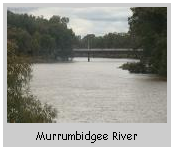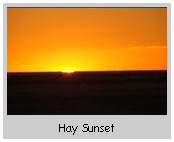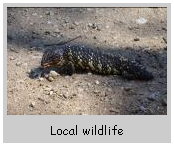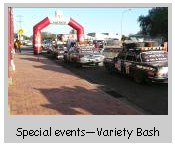
|
Located on the banks of the Murrumbidgee River in the Western Riverina Region and once passed through by noted explorer Charles Sturt, Hay was an important river crossing in the 1850’s for stock being driven south to markets in Victoria. Named after Sir John Hay, a local pastoralist and member of Parliament in 1859 and its current site once "squatters" properties, Hay soon became an important hub for local and district pastoral holders in the production of stock and wool. Its original Courthouse was built in 1860, and was the first of four Courthouses Hay would see over the years. The towns current Courthouse building was erected in 1892 and is still used today. In 1862 The Cobb & Co coach company moved to Hay and established its Southern operations headquarters. A coach factory was also set up and operated for about 35 years. |
  |
  |
Hay saw the opening of its gaol in 1880. Built during 1878-1879 this building would over the years be transformed from a gaol for the imprisonment of short-term offenders (1880-1915) to a Maternity Hospital (1920-1930) to a Lock Hospital for the insane (1931-1940) part of the POW camps WWII (1940-1946) back to a Prison for a year (1946-1947) and finally used by the NSW Department of Child Welfare in 1961 for the incarceration of young girls 13-18 years of age until it ceased operation in June 1974. A decision made by the NSW Government in 1880 to extend the railway line from Narrandera into Hay, resulted in Hay Railway Station being built and opened on the 4th July 1882. After celebrating its centenary in 1982, its last passenger train ran in 1983 after 101 years of service. Over the decades the development of Hay progressed and the township thrived with its population growing from 300 to over 3000. This, however received a blow in 1914 with the enlisting of 641 of Hay and its Districts eligible men for active service in WWI, the largest enlistment of any small town in Australia. 134 of them did not return. |
|
1940 saw Hay the chosen location for three WWII camps designed to hold POWs and internees and done so by the Australian Government due to its isolation and distance from the sea and any major city. These three camps would become the temporary homes for 4000 men during WWII (1940 - 1946). It was to these camps a group of European men arrived "The Dunera Boys" as history would soon have them known. Agriculture is a major industry in Hay with over a third of the Hay District working directly in the agricultural industry. These industries include Sheep (wool & meat) and Beef/Cattle production, Horticulture with lettuce, pumpkin, tomato, garlic, corn, rockmelon/watermelon and broccoli and various other vegetables all grown, picked and packaged in Hay for transportation to markets or contracted to major supermarkets. Also included are rice and cotton, water chestnuts, grapes aquaculture and olive plantations. Kangaroo culling/meat processing also occurs in the region. Today the Hay Shire covers an area of over 11,000 kilometers with a total land area in the Hay Rural Lands Protection Board District of 2,500,000 hectares. Flat open treeless plains with a 180 degree skyline, the greatest elevation difference from the highest point to the lowest point is no more than 17metres. With a current district township of only 3000 people Hay remains rich with cultural heritage, historic buildings and pure country hospitality. |
  |





